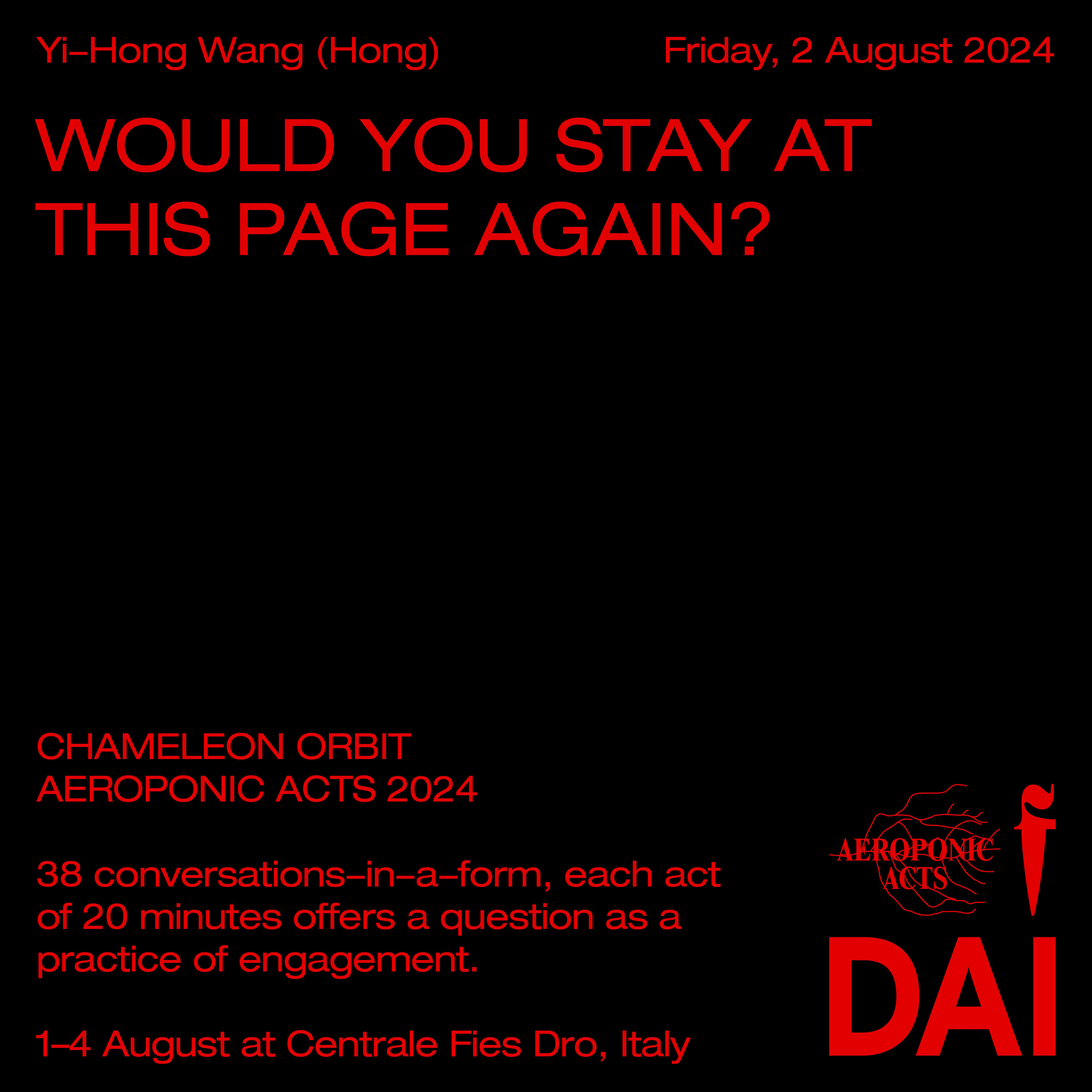Yi-Hong Wang (Hong) ~ (This Page Intentionally Left Blank)
In my practice, I explore cinematic temporality with projectors. I am interested in the experience of perceiving, forgetting and arriving in an image. I am interested in the image as a space to forget, and the disjunction between forgetting and remembering. Tetralogy of Absence (2022-ongoing) is a live performance series with empty slides and fragmental narrative as a ground for relating. The performance explores image emptiness as a solace space, and the tension between image and documentation. Along with the projected empty image, the narrative refuses “reliable” history, memory, timelines or geographical locations. Still, the taste of joy, unease, peace, pain, passion, conflict, and helplessness are never fictional but always incised. On embodying what one knows is already known and one can only recognise it.
AEROPONIC ACTS 2024 ~ Chameleon Orbit

